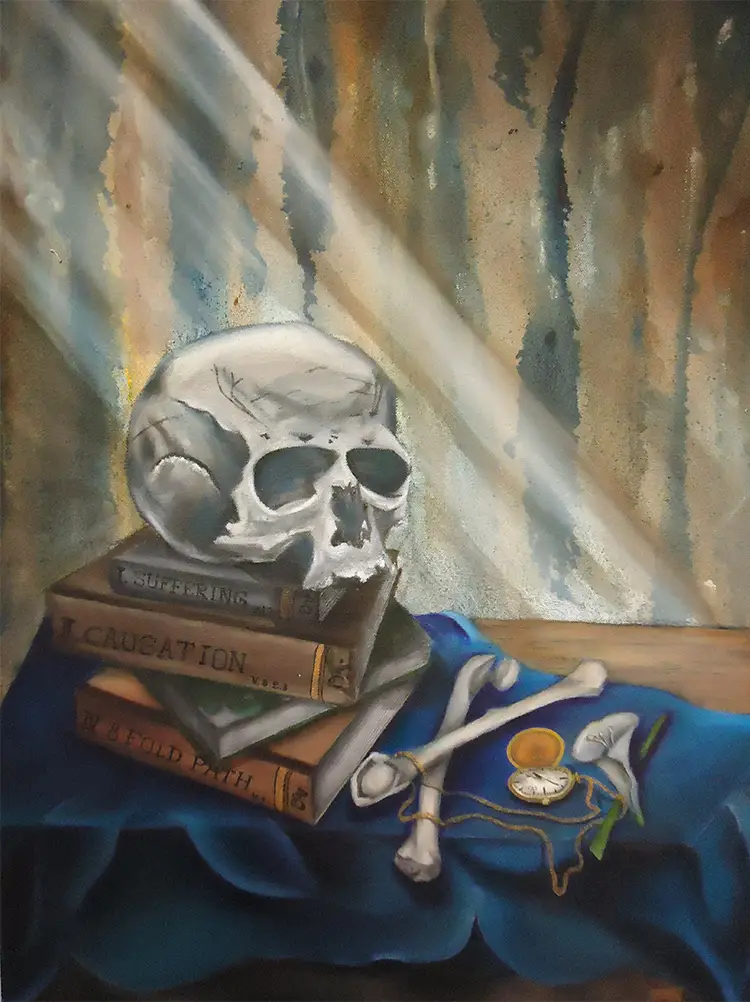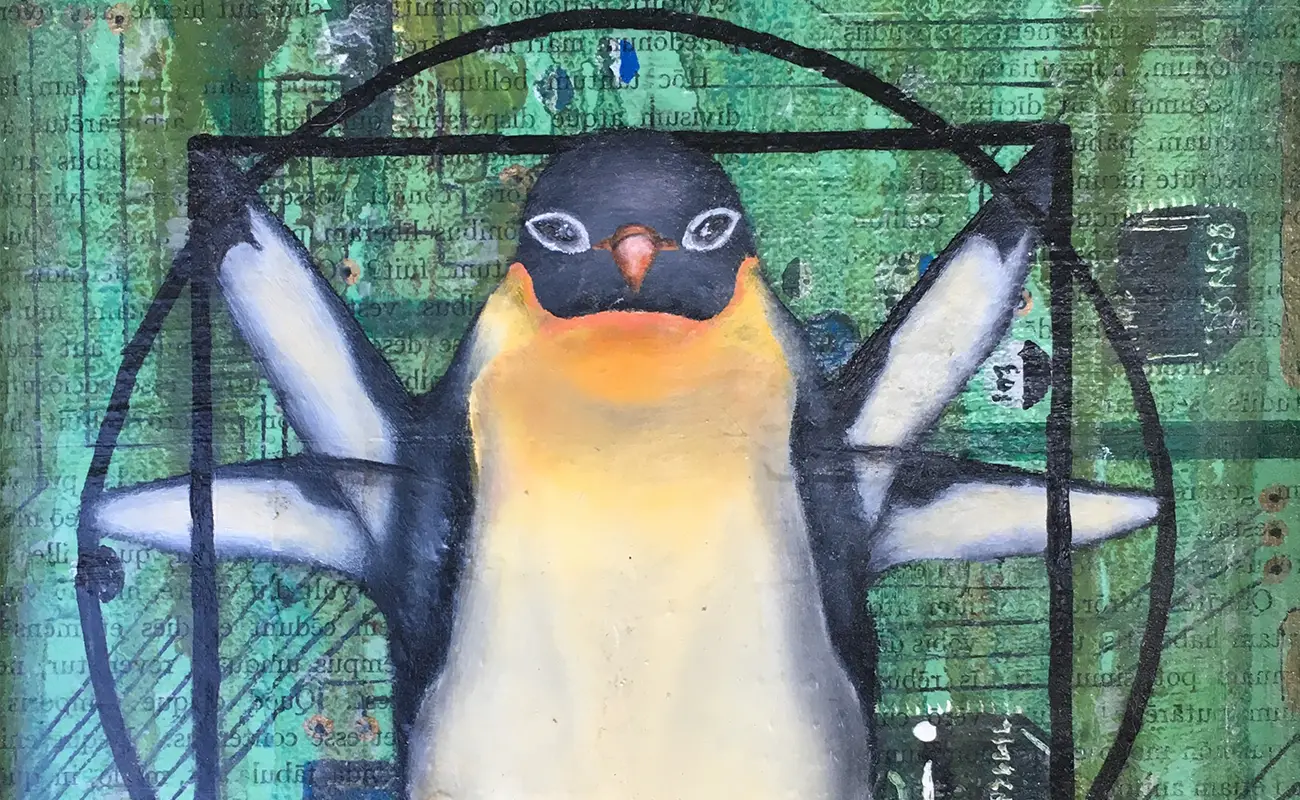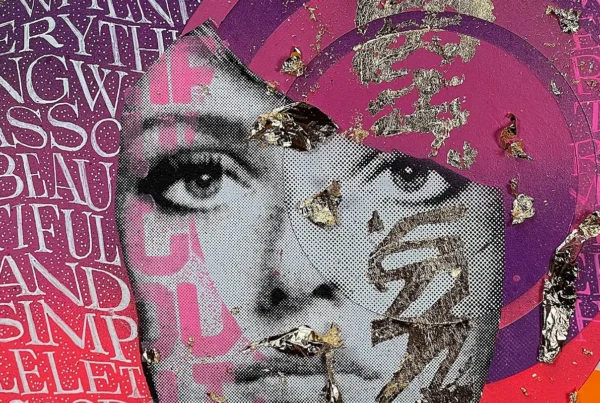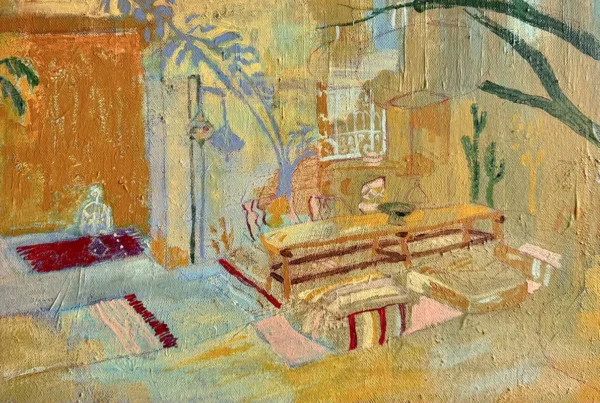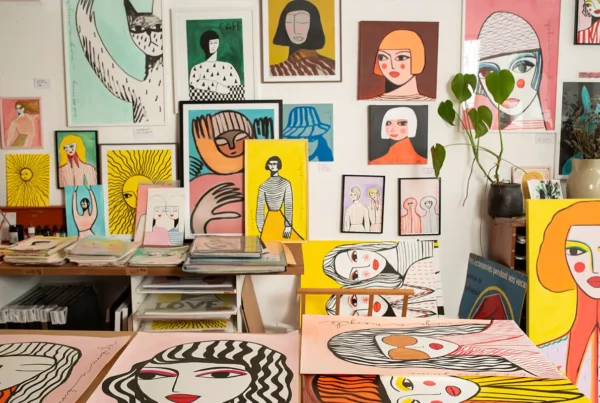“I want to capture the total sensory truth of a thing or idea as it exists in a particular time.”
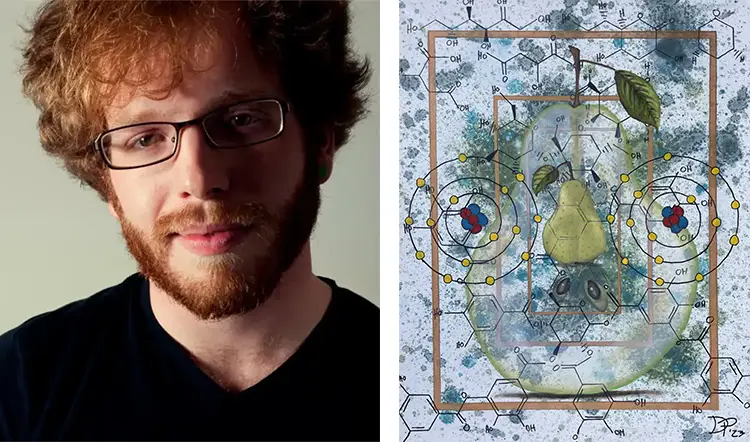
The River Always Changes: Capturing Beauty in Transience
Standing at the crossroads of impermanence and expression, Dustin Parr is more than a painter—he is a documentarian of fleeting moments. Based in Denver, Colorado, Parr brings a layered and philosophical approach to his work as an oil painter, muralist, and residential painting contractor. His art is deeply shaped by a peripatetic upbringing as an “army brat,” having spent his formative years across various parts of the globe. The constant movement instilled in him a heightened awareness of how temporary everything is—homes, relationships, even identities. These shifting sands of life led him to explore themes of mortality, ephemeral beauty, and the desire to pause time through imagery.
Parr’s perspective is rooted in the belief that reality is never static. He often returns to a quote attributed to Heraclitus: “No man can stand in the same river twice, for it’s not the same man and not the same river.” This notion of perpetual change permeates his work, where every brushstroke becomes a meditation on presence and decay. He aims to encapsulate not just visual likeness, but the total sensory essence of a moment, where physical truth intersects with emotional clarity. His paintings are not confined by realism or abstraction but instead operate in a space where the metaphysical is made visible through unrestrained color and dynamic composition.
The technical rigor behind Parr’s work is as vital as the ideas that inform it. His experience as a painting contractor significantly altered the trajectory of his style. Once marked by impulsive gestures and alla prima spontaneity, his paintings have matured into precise, crisp compositions that demonstrate control over medium and chemistry. The intersection between craft and concept is evident in his evolving aesthetic—a hybrid that seeks resonance with both traditional oil painting and the evolving visual vocabulary shaped by digital media and photography. For Parr, this bridge between the classic and the contemporary is not just stylistic but philosophical, affirming that even in a world saturated with rapid innovation, moments of depth and reflection remain essential.
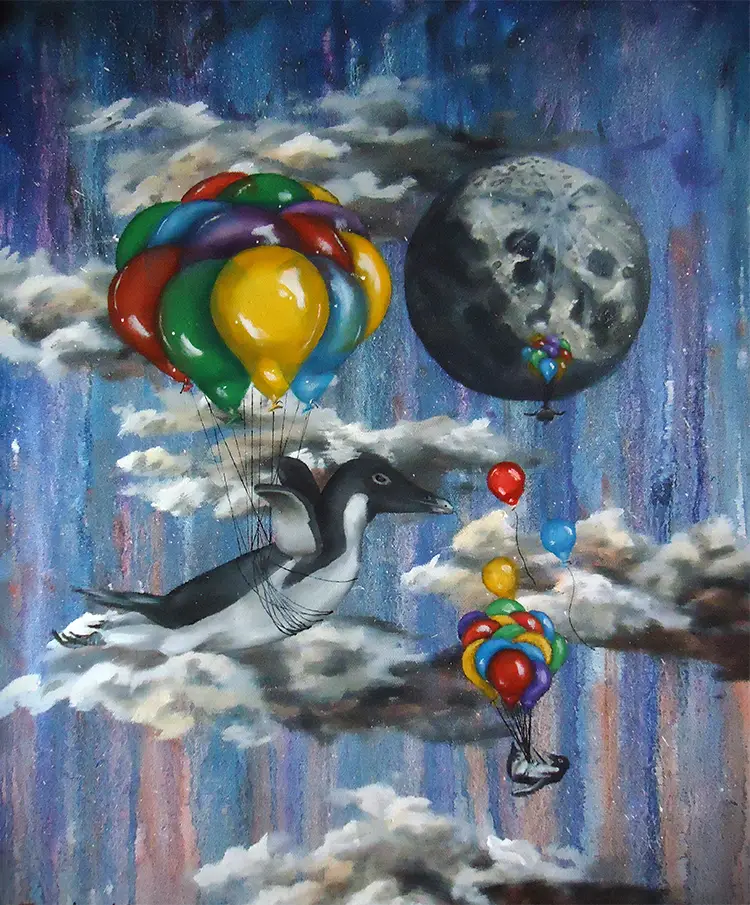
Dustin Parr: From Graffiti Nights to Gallery Lights
Art became Parr’s sanctuary long before it became his profession. In his youth, it served as a private language—a way to speak truths too delicate or complex for words. Through visual symbolism, he externalized emotions and thoughts that often resisted direct articulation. This early relationship with art as a conduit for vulnerability shaped his commitment to authenticity, both in his work and in his community. He views his art as a bridge, connecting himself to others who may also be quietly navigating emotional landscapes. The intimacy of expression continues to fuel his creativity, especially in moments of self-doubt or public scrutiny.
His transition into a professional art career took a nontraditional route. After art school, he began organizing underground exhibitions inspired by the French Salon des Refusés—bringing art into domestic spaces by transforming homes into impromptu galleries. These events, titled “Formality Aside: Bringing Culture Home,” offered emerging artists a platform outside of institutional gatekeeping. They weren’t just exhibitions; they were collaborative, living experiments in community building and artistic freedom. Parr’s dedication to democratizing art carried into the streets, where he and a group of artists created public graffiti installations using stencils and stickers. These works, though temporary, were intentionally provocative—aimed at stirring thought and laughter, not vandalism.
Over time, the desire to reach a broader audience guided Parr toward more formal venues like galleries and art fairs. Though street art and grassroots shows offered a sense of raw expression, the structured environment of the gallery allowed for deeper conversations and long-term connections with viewers. Yet the punk-rock heart behind his early projects still beats strongly. The memory of leaving marks on the city—making people pause amid their routines—remains a powerful motivator. For Parr, art is not only something to be seen but something to be felt, shared, and sometimes stumbled upon in unexpected places.

Soundtracks and Solitude: The Ritual of the Studio
In Parr’s creative life, the studio is not a sanctuary free of distraction—it is a space carefully orchestrated to allow focus to take root. Before he even touches a brush, he attends to the minutiae of daily life. The house must be in order, the pets fed, and the needs of others addressed. Only then can he fully inhabit the headspace required for painting. This need for mental and physical clarity speaks to the vulnerability of the creative process; even minor disruptions can fracture concentration and pull him out of the delicate rhythm of making.
Once in the studio, audio becomes essential. Whether it’s music or audiobooks, Parr uses sound as a means to bypass overthinking and engage muscle memory and intuition. Painting, especially at advanced stages, often shifts from conceptual problem-solving to technical execution. During these periods, background noise allows his hands to take over, guided by years of experience and instinct. He notes that his best work emerges not when he plans obsessively but when he simply begins—allowing the act of creation to lead him rather than the other way around. It’s in this surrender to the process that his most compelling pieces are born.
Despite his professional discipline, Parr is not immune to the dreaded creative block. His strategy is deceptively simple: he shows up. Often, just the act of being present in the studio is enough to move through inertia. He likens it to a compulsion—the initial hesitation giving way to pride and momentum as the work unfolds. Collaboration, too, plays a key role. Sharing studio space with trusted peers offers a fresh lens and renewed energy. One such moment of stagnation turned unexpectedly fruitful when a friend suggested painting about eggs. Parr countered with mermaids. The absurdity broke the impasse, and the resulting works were both playful and profound—proof that inspiration often hides in humor and spontaneity.
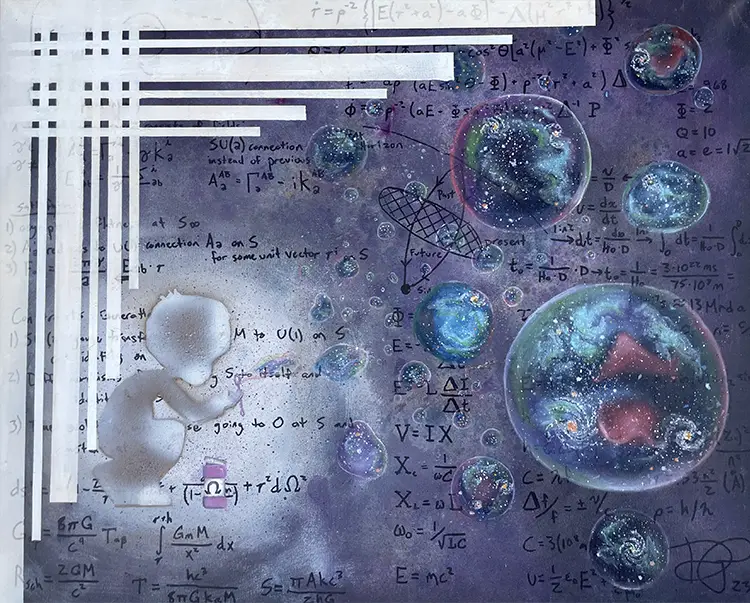
Dustin Parr: Letting Go to Let Art Live
Among Parr’s many pieces, one project stands apart—not just for its form, but for the emotional transformation it catalyzed. Early in his career, he grappled with the pain of parting with his artwork. Selling a piece felt like losing a piece of himself—his time, emotion, and creative energy bundled into something that no longer belonged to him. To explore this emotional terrain, he began experimenting with glove molds and created a series of concrete sculptures of a baby curled into a fetal position. What began as technical play evolved into a deeply symbolic act of release.
Parr produced dozens of these sculptures and began leaving them anonymously on strangers’ doorsteps in the middle of the night. Some were wrapped in cloth, others placed in baskets, and a few even bore toe tags. The gesture was not a prank but an intentional relinquishing of ownership. These small acts of abandonment became cathartic, helping him process the idea that art, once created, deserves a life beyond its maker. Each sculpture was a silent message, a strange gift left to find meaning in a new context. The act offered him a kind of emotional resolution, transforming sorrow into liberation.
This project also illustrates a central tenet of Parr’s artistic philosophy: once released into the world, a work of art becomes autonomous. It carries its own narrative, independent of the artist’s original intent. That philosophy informs his use of oil paint—his preferred medium for its rich transparency, vibrant color, and capacity for layering. Oil allows him to manipulate form with a depth unmatched by other materials, though it also demands patience. Working on multiple canvases simultaneously, he balances the lengthy drying times with creative momentum. Despite its unforgiving nature, oil painting mirrors life for Parr: irreversible, unpredictable, and always moving forward. With each brushstroke, he embraces risk—trusting that even in potential ruin, beauty might still emerge.
